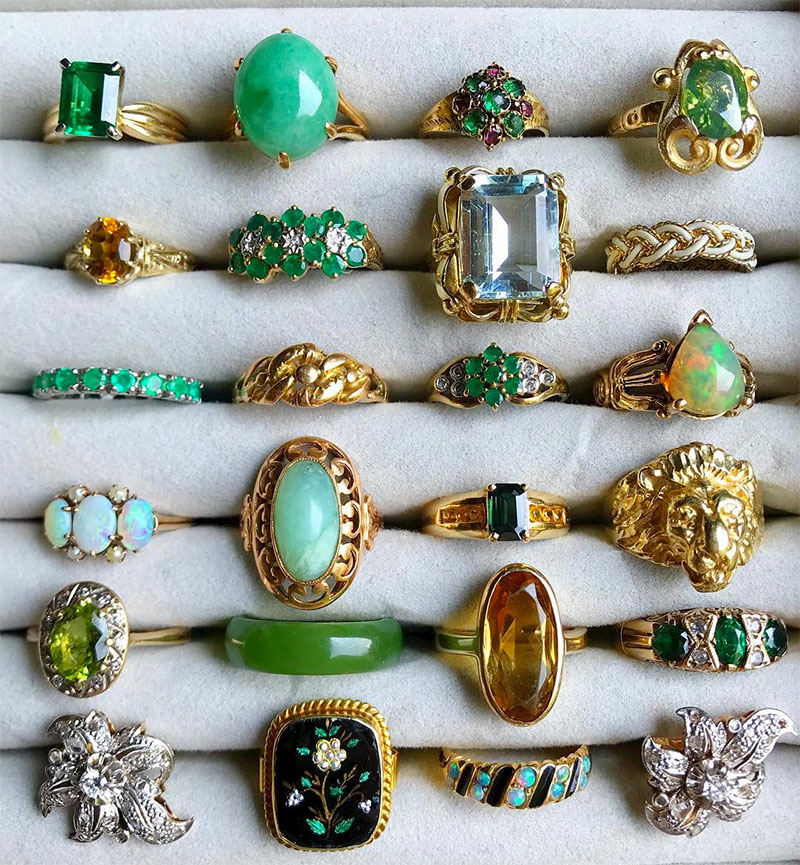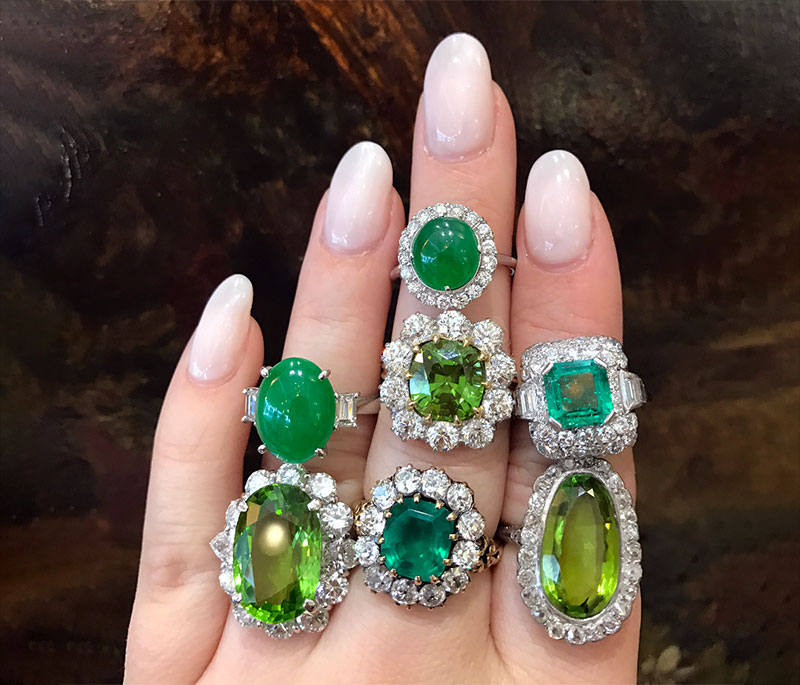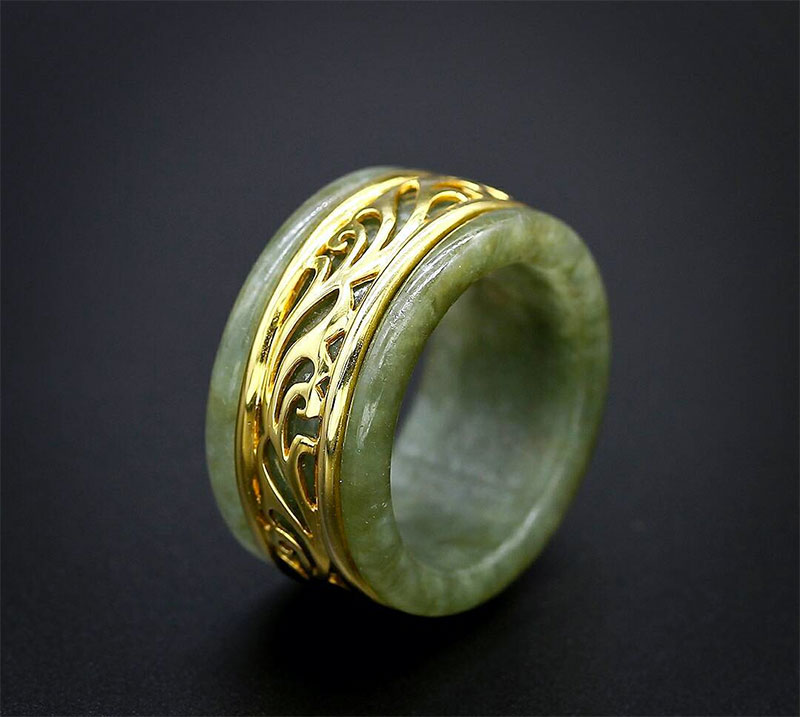If you are in the market for a jade ring, you should do your homework first, and read up on jade and its different incarnations before you do any buying. Jade rings are gorgeous, to be sure, but you really need to be sure of what you are paying for before you pick one out.

History of the Jade Ring
Jade has been mined and used for jewelry for over 2000 years. The Chinese were the first to really use jade as a gemstone. They used it in their religious rituals, and it was a very prized substance in their culture. Jade was also used by Pre-Columbian natives in South America and by 17th century Maoris. It wasn’t until the mid-1800’s thought that it was discovered that jade actually takes on two different forms, both of which are still called “jade”.
Types of Jade Used in Jade Rings
The gemstone jade comes in two different types – Jadeite and Nephrite. Both come in colors ranging from light pastel to naturally dark, earth tones.

- Jadeite is the more precious gemstone of the two. It has a hardness of 7 on the Mohs scale, and in its natural state, most jadeite is white to very pale lavender. It can also be light green, pink, brown, blue, black, orange and yellow. The exception to this is Imperial jade, which has a gorgeous apple green to emerald green color. It is translucent and sometimes nearly transparent. Imperial Jade is very rare and very valuable.
- Nephrite is a more common type of jade and has a hardness of 6.5 on the Mohs scale. Despite this hardness rating, it is very tough, tougher than steel. Its colors can range from cream to dark green. Spinach green to sage green is the most common color for nephrite jade. A ring that appears to be a black jade ring may actually be made with nephrite jade, which appears to be black but is really just very dark green. Some nephrite can appear to have a cat’s eye effect due to banding – something that can’t happen with jadeite because it has a granular structure.
Things to Look For in Jade Rings
- Lower quality jadeite can be impregnated with wax or plastic resins to make it appear more like Imperial Jade. Always ask if a jade ring has been treated before buying.
- Some other gemstones are dyed to make them look like jade, like chalcedony, which is translucent and can often be made to look strikingly like jade.
- Glass and plastic can sometimes be glued to the top of jade to make it appear that it has better color. These “doublets” are not as valuable as genuine untreated jade. A jeweler can tell if one of these doublets have been applied to jade because natural jade has a dimpled appearance when viewed under magnification, and glass or plastic does not.
- Jade lookalikes are often labeled with names like Korea jade, Colorado jade (amazonite), Indian jade (aventurine), Australian jade (chrysoprase), and Honan jade (soapstone). These stones are not jade at all, and should not be confused with true jadeite or nephrite.

Taking your time and doing some homework first will go a long way to getting the beautiful gold jade ring or even silver jade ring you have always wanted. Ask for a gemological certificate for an expensive jade ring or jade jewelry. Just make sure you are really paying for jade and not an imitation or inferior quality jade that has been altered to appear that is of higher quality than it is.

 Custom Dog Tags for Men
Custom Dog Tags for Men
hello there,
really love the ring in the last picture of this article (under Point 4), may I please ask where is it from? or if you could share the name of the store its from please??